Aswan Dam
| Aswan High Dam | |
|---|---|
 The Aswan High Dam as seen from space | |
 Location of the Aswan Dam in Egypt | |
| Official name | Aswan High Dam |
| Location | Aswan, Egypt |
| Coordinates | 23°58′14″N 32°52′40″E / 23.97056°N 32.87778°ECoordinates: 23°58′14″N 32°52′40″E / 23.97056°N 32.87778°E |
| Construction began | 1960 |
| Opening date | 1970 |
| Dam and spillways | |
| Type of dam | Embankment |
| Impounds | River Nile |
| Height | 111 m (364 ft) |
| Length | 3,830 m (12,570 ft) |
| Width (base) | 980 m (3,220 ft) |
| Spillway capacity | 11,000 m3/s (390,000 cu ft/s) |
| Reservoir | |
| Creates | Lake Nasser |
| Total capacity | 132 km3 (107,000,000 acre·ft) |
| Surface area | 5,250 km2 (2,030 sq mi) |
| Max. length | 550 km (340 mi) |
| Max. width | 35 km (22 mi) |
| Max. water depth | 180 m (590 ft) |
| Normal elevation | 183 m (600 ft) |
| Power station | |
| Commission date | 1967–1971 |
| Turbines | 12×175 MW (235,000 hp) Francis-type |
| Installed capacity | 2,100 MW (2,800,000 hp) |
| Annual generation | 10,042 GWh (2004)[1] |
The Aswan Dam is an embankment dam built across the Nile at Aswan, Egypt between 1898 and 1902. Since the 1960s, the name commonly refers to the Aswan High Dam. Construction of the High Dam became a key objective of the Egyptian Government following the Egyptian Revolution of 1952, as the ability to control floods, provide water for irrigation, and generate hydroelectricity were seen as pivotal to Egypt's industrialization. The High Dam was constructed between 1960 and 1970, and has had a significant effect on the economy and culture of Egypt.
Before the dams were built, the Nile flooded every year during late summer, when water flowed down the valley from its East African drainage basin. These floods brought high water and natural nutrients and minerals that annually enriched the fertile soil along the floodplain and delta; this had made the Nile valley ideal for farming since ancient times. Because floods vary, in high-water years the whole crop might be wiped out, while in low-water years widespread drought and famine occasionally occurred. As Egypt's population grew and conditions changed, both a desire and ability developed to control the floods, and thus both protect and support farmland and the economically important cotton crop. With the reservoir storage provided by the Aswan dams, the floods could be lessened and the water stored for later release.
Construction history
The earliest recorded attempt to build a dam near Aswan was in the 11th century, when the Arab polymath and engineer Ibn al-Haytham (known as Alhazen in the West) was summoned to Egypt by the Fatimid Caliph, Al-Hakim bi-Amr Allah, to regulate the flooding of the Nile, a task requiring an early attempt at an Aswan Dam.[2] His field work convinced him of the impracticality of this scheme.[3]
Aswan Low Dam, 1898–1902
The British began construction of the first dam across the Nile in 1898. Construction lasted until 1902, and the dam was opened on 10 December 1902. The project was designed by Sir William Willcocks and involved several eminent engineers, including Sir Benjamin Baker and Sir John Aird, whose firm, John Aird & Co., was the main contractor.[4][5]
Aswan High Dam prelude, 1954–1959
In 1912 the Greek-Egyptian engineer Adrian Daninos began to develop the plan of the new Aswan Dam. Although the Low Dam was almost over-topped in 1946, the Egyptian government of King Farouk showed no interest in Daninos's plans. Instead the Nile Valley Plan by British hydrologist Harold Edwin Hurst to store water in Sudan and Ethiopia, where evaporation is much lower, was favored. The Egyptian position changed completely with the overthrow of the monarchy, led by the Free Officers Movement including Gamal Abdel Nasser. The Free Officers were convinced that the Nile Waters had to be stored in Egypt for political reasons, and within two months the plan of Daninos was accepted.[6] Initially, both the US and the Soviet Union were interested in the development of the dam, but this occurred in the midst of the Cold War, as well as growing intra-Arab rivalries.
In 1955 Nasser was trying to portray himself as the leader of Arab nationalism, in opposition to the traditional monarchies, especially Hashemite Iraq following its signing of the 1955 Baghdad Pact. At that time the US feared that communism would spread to the Middle East and saw Nasser as a natural leader of an anti-communist pro-capitalist Arab League. America and Britain offered to help finance construction of the high dam, with a loan of US$270 million, in return for Nasser's leadership in resolving the Arab-Israeli conflict. While opposed both to communism, capitalism, and imperialism, Nasser presented himself as a tactical neutralist, and sought to work with both the United States and the Soviet Union for Egyptian and Arab benefit.[7] After a particularly criticized raid by Israel against Egyptian forces in Gaza in 1955, Nasser realized that he could not legitimately portray himself as the leader of pan-Arab nationalism if he could not defend his country militarily against Israel. In addition to his development plans, he looked to quickly modernize his military, and turned first to the US.

US Secretary of State John Foster Dulles and American President Dwight Eisenhower told Nasser that the US would supply him with weapons only if they were used for defensive purposes and accompanied by US military personnel for supervision and training. Nasser did not accept these conditions and then looked to the Soviet Union for support. Although Dulles believed that Nasser was only bluffing and that the Soviet Union would not aid Nasser, he was wrong—the Soviet Union promised Nasser a quantity of arms in exchange for a deferred payment of Egyptian grain and cotton. On 27 September 1955, Nasser announced an arms deal, with Czechoslovakia acting as a middleman for the Soviet support.[8] Instead of attacking Nasser for turning to the Soviets, Dulles sought to improve relations with him. This explains the later offer of December 1955, in which the US and Britain pledged $56 and $14 million respectively towards the construction of the dam.[9]

Though the Czech arms deal actually increased US willingness to invest in Aswan, the British cited the deal as a reason for betraying their promise of funds. What angered Dulles much more was Nasser's recognition of China, which was in direct conflict with Dulles's policy of containment.[10] There are several other reasons why the US decided to withdraw the offer of funding. Dulles believed that the Soviet Union would not fulfill its commitment to help the Egyptians. He was also irritated by Nasser's neutrality and attempts to play both sides of the Cold War. At the time, other western allies in the Middle East, including Turkey and Iraq, were irritated and jealous that Egypt, a persistently neutral country, was being offered so much aid.[11]
In June 1956, the Soviets offered Nasser $1.12 billion at 2% interest for the construction of the dam. On 19 July the US State Department announced that American financial assistance for the High Dam was "not feasible in present circumstances."[9]
On 26 July 1956, with wide Egyptian acclaim, Nasser announced the nationalization of the Suez Canal as well as fair compensation for the former owners. Nasser planned on the revenues generated by the canal helping to fund construction of the High Dam. When the Suez War broke out, the United Kingdom, France, and Israel seized the canal and the Sinai, but pressure from the US and the Soviet Union at the United Nations and elsewhere forced them to withdraw.
In 1958, the Soviet Union provided funding for the dam project.

In the 1950s, archaeologists began raising concerns that several major historical sites, including the famous temple of Abu Simbel were about to be under water. A rescue operation began in 1960 under UNESCO (for details see below under Effects).
Construction and filling, 1960–1976

The Soviets also provided technicians and heavy machinery. The enormous rock and clay dam was designed by the Soviet Hydroproject Institute along with some Egyptian engineers. 25,000 Egyptian engineers and workers contributed to the construction of the dams.
On the Egyptian side, the project was led by Osman Ahmed Osman's Arab Contractors. The relatively young Osman underbid his only competitor by one-half.[12]
- 1960: Start of construction on 9 January[13]
- 1964: First dam construction stage completed, reservoir started filling
- 1970: The High Dam, as-Sad al-'Aali, completed on 21 July[14]
- 1976: Reservoir reached capacity
- 2011: plans to build extension to dam
Specifications
The Aswan High Dam is 3,830 metres (12,570 ft) long, 980 m (3,220 ft) wide at the base, 40 m (130 ft) wide at the crest and 111 m (364 ft) tall. It contains 43,000,000 cubic metres (56,000,000 cu yd) of material. At maximum, 11,000 cubic metres per second (390,000 cu ft/s) of water can pass through the dam. There are further emergency spillways for an extra 5,000 cubic metres per second (180,000 cu ft/s), and the Toshka Canal links the reservoir to the Toshka Depression. The reservoir, named Lake Nasser, is 550 km (340 mi) long and 35 km (22 mi) at its widest, with a surface area of 5,250 square kilometres (2,030 sq mi). It holds 132 cubic kilometres (1.73×1011 cu yd) of water.

Irrigation scheme
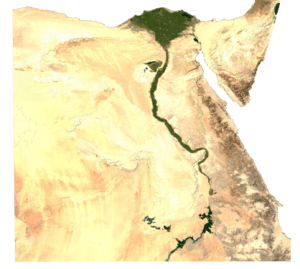
Due to the absence of appreciable rainfall, Egypt's agriculture depends entirely on irrigation. With irrigation, two crops per year can be produced, except for sugar cane which has a growing period of almost one year.
The high dam at Aswan releases, on average, 55 cubic kilometres (45,000,000 acre·ft) water per year, of which some 46 cubic kilometres (37,000,000 acre·ft) are diverted into the irrigation canals.
In the Nile valley and delta, almost 33,600 square kilometres (13,000 sq mi) benefit from these waters producing on average 1.8 crops per year. The annual crop consumptive use of water is about 38 cubic kilometres (31,000,000 acre·ft). Hence, the overall irrigation efficiency is 38/46 = 0.82 or 82%. This is a relatively high irrigation efficiency. The field irrigation efficiencies are much less, but the losses are re-used downstream. This continuous re-use accounts for the high overall efficiency.
The following table shows that the equal distribution of irrigation water over the branch canals taking off from the one main irrigation canal, the Mansuriya Canal near Giza, leaves much to be desired:[15]
| Branch canal | Water delivery in m³/feddan * |
|---|---|
| Kafret Nasser | 4700 |
| Beni Magdul | 3500 |
| El Mansuria | 3300 |
| El Hammami upstream | 2800 |
| El Hammami downstream | 1800 |
| El Shimi | 1200 |
- * Period 1 March to 31 July. 1 feddan is 0.42 ha or about 1 acre.
- * Data from the Egyptian Water Use Management Project (EWUP)[16]
The salt concentration of the water in the Aswan reservoir is about 0.25 kilograms per cubic metre (0.42 lb/cu yd), a very low salinity level. At an annual inflow of 55 cubic kilometres (45,000,000 acre·ft), the annual salt import reaches 14 million tons. The average salt concentration of the drainage water evacuated into the sea and the coastal lakes is 2.7 kilograms per cubic metre (4.6 lb/cu yd).[17] At an annual discharge of 10 cubic kilometres (2.4 cu mi) (not counting the 2 kilograms per cubic metre [3.4 lb/cu yd] of salt intrusion from the sea and the lakes, see figure "Water balances"), the annual salt export reaches 27 million ton. In 1995, the salt export was higher than the import, and Egypt's agricultural lands were desalinizing. Part of this could be due to the large number of subsurface drainage projects executed in the last decades to control the water table and soil salinity.[18]
Drainage through sub-surface drains and drainage channels is essential to prevent a deterioration of crop yields from waterlogging and soil salinization caused by irrigation. By 2003, more than 20,000 square kilometres (7,700 sq mi) have been equipped with a subsurface drainage system and approximately 7.2 square kilometres (2.8 sq mi) of water is drained annually from areas with these systems. The total investment cost in agricultural drainage over 27 years from 1973 to 2002 was about US$3.1 billion covering the cost of design, construction, maintenance, research and training. During this period 11 large-scale projects were implemented with financial support from World Bank and other donors[19]
Effects
The High Dam has resulted in protection from floods and droughts, an increase in agricultural production and employment, electricity production and improved navigation that benefits tourism. Conversely, the dam flooded a large area, causing the relocation of over 100,000 people. Many archaeological sites were submerged while others were relocated. The dam is blamed for coastline erosion, soil salinity and health problems.
The assessment of the costs and benefits of the dam remains controversial decades after its completion. According to one estimate, the annual economic benefit of the High Dam immediately after its completion was E£255 million (US$587 million using the 1970 exchange rate of US$2.30 per E£1): £140 million from agricultural production, £100 million from hydroelectric generation, £10 million from flood protection, and £5 million from improved navigation. At the time of its construction, total cost, including unspecified "subsidiary projects" and the extension of electric power lines, amounted to £450 million. Not taking into account the negative environmental and social effects of the dam, its costs are thus estimated to have been recovered within only two years.[20] One observer notes: "The impacts of the Aswan High Dam (...) have been overwhelmingly positive. Although the Dam has contributed to some environmental problems, these have proved to be significantly less severe than was generally expected, or currently believed by many people."[21] Another observer disagrees and recommended that the dam should be torn down. Tearing it down would cost only a fraction of the funds required for "continually combating the dam's consequential damage" and 500,000 hectares of fertile land could be reclaimed from the layers of mud on the bed of the drained reservoir.[22]
Periodic floods and droughts have affected Egypt since ancient times. The dam mitigated the effects of floods, such as those in 1964, 1973 and 1988. Navigation along the river has been improved, both upstream and downstream of the dam. Sailing along the Nile is a favorite tourism activity, which is mainly done during winter when the natural flow of the Nile would have been too low to allow navigation of cruise ships. A new fishing industry has been created around Lake Nasser, though it is struggling due to its distance from any significant markets. The annual production was about 35 000 tons in the mid-1990s. Factories for the fishing industry and packaging have been set up near the Lake.[23]
Drought protection, agricultural production and employment
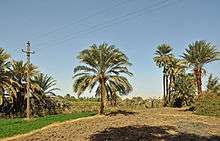
The dams also protected Egypt from the droughts in 1972–1973 and 1983–1987 that devastated East and West Africa. The High Dam allowed Egypt to reclaim about 2 million feddan (840,000 hectares) in the Delta and along the Nile Valley, increasing the country's irrigated area by a third. The increase was brought about both by irrigating what used to be desert and by bringing under cultivation of 385,000 ha that were previously used as flood retention basins.[24] About half a million families were settled on these new lands. In particular the area under rice and sugar cane cultivation increased. In addition, about 1 million feddan (420,000 hectares), mostly in Upper Egypt, were converted from flood irrigation with only one crop per year to perennial irrigation allowing two or more crops per year. On other previously irrigated land, yields increased because water could be made available at critical low-flow periods. For example, wheat yields in Egypt tripled between 1952 and 1991 and better availability of water contributed to this increase. Most of the 32 km³ of freshwater, or almost 40 percent of the average flow of the Nile that were previously lost to the sea every year could be put to beneficial use. While about 10 km³ of the water saved is lost due to evaporation in Lake Nasser, the amount of water available for irrigation still increased by 22 km³.[23] Other estimates put evaporation from Lake Nasser at between 10 and 16 cubic km per year.[25]
Electricity production
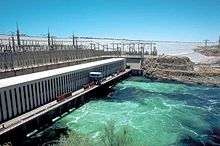
The dam powers twelve generators each rated at 175 megawatts (235,000 hp), with a total of 2.1 gigawatts (2,800,000 hp). Power generation began in 1967. When the dam first reached peak output it produced around half of Egypt's entire electricity production (about 15 percent by 1998) and allowed most Egyptian villages to use electricity for the first time. The High Dam has also improved the efficiency and the extension of the Old Aswan Hydropower stations by regulating upstream flows.[23]
Resettlement
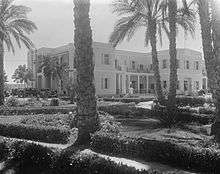
Lake Nasser flooded much of lower Nubia and 100,000 to 120,000 people were resettled in Sudan and Egypt.[26]
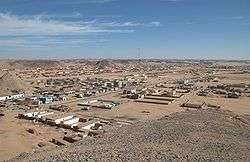
In Sudan, 50,000 to 70,000 Sudanese Nubians were moved from the old town of Wadi Halfa and its surrounding villages. Some were moved to a newly created settlement on the shore of Lake Nasser called New Wadi Halfa, and some were resettled approximately 700 kilometres south to the semi-arid Butana plain near the town of Khashm el-Girba up the Atbara River. The climate there had a regular rainy season as opposed to their previous desert habitat in which virtually no rain fell. The government developed an irrigation project, called the New Halfa Agricultural Development Scheme to grow cotton, grains, sugar cane and other crops. The Nubians were resettled in twenty five planned villages that included schools, medical facilities and other services including piped water and some electrification.
In Egypt, the majority of the 50,000 Nubians were moved three to ten kilometers from the Nile near Kom Ombo, 45 kilometers downstream from Aswan in what was called “New Nubia”. Housing and facilities were built for 47 village units whose relationship to each other approximated that in Old Nubia. Irrigated land was provided to grow mainly sugar cane.[27][28]
Archaeological sites
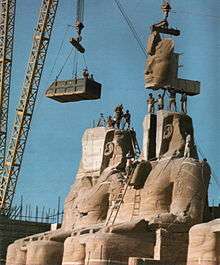
22 monuments and architectural complexes, including the Abu Simbel temples, that were threatened by flooding from Lake Nasser were preserved by moving them to the shores of Lake Nasser under the UNESCO Nubia Campaign.[29] Also moved were Philae, Kalabsha and Amada.[23] Other monuments were granted to countries that helped with the works (such as the Debod temple in Madrid, the Temple of Taffeh in Leiden and the Temple of Dendur in New York). The remaining archaeological sites, including the Buhen fort have been flooded by Lake Nasser.
Loss of sediments

Before the construction of the High Dam, the Nile deposited sediments of various particle size – consisting of fine sand, silt and clay – on fields in Upper Egypt through its annual flood, contributing to soil fertility. However, the nutrient value of the sediment has often been overestimated. 88 percent of the sediment was carried to the sea before the construction of the High Dam. The nutrient value added to the land by the sediment was only 6,000 tons of potash, 7,000 tons of phosphorus pentoxide and 17,000 tons of nitrogen. These amounts are insignificant compared to what is needed to reach the yields achieved today in Egypt's irrigation.[30] Also, the annual spread of sediment due to the Nile floods occurred along the banks of the Nile. Areas far from the river which never received the Nile floods before are now being irrigated.[31]
The trapping of sediment by the dam has also increased coastline erosion surrounding the Nile Delta. The coastline erodes an estimated 125–175 m (410–574 ft) per year.[32]
Waterlogging and increase in soil salinity
Before the construction of the High Dam, groundwater levels in the Nile Valley fluctuated 8–9 m per year with the water level of the Nile. During summer when evaporation was highest, the groundwater level was too deep to allow salts dissolved in the water to be pulled to the surface through capillary action. With the disappearance of the annual flood and heavy year-round irrigation, groundwater levels remained high with little fluctuation leading to waterlogging. Soil salinity also increased because the distance between the surface and the groundwater table was small enough (1–2 m depending on soil conditions and temperature) to allow water to be pulled up by evaporation so that the relatively small concentrations of salt in the groundwater accumulated on the soil surface over the years. Since most of the farmland did not have proper subsurface drainage to lower the groundwater table, salinization gradually affected crop yields.[24] Drainage through sub-surface drains and drainage channels is essential to prevent a deterioration of crop yields from soil salinization and waterlogging. By 2003, more than 2 million have been equipped with a subsurface drainage system at a cost from 1973 to 2002 of about US$3.1 billion.[33]
Health

Contrary to many predictions made prior to the Aswan High Dam construction and publications that followed, that the prevalence of bilharzia (schistosomiasis) would increase, it did not.[34] This assumption did not take into account the extent of perennial irrigation that was already present throughout Egypt decades before the high dam closure. By the 1950s only a small proportion of Upper Egypt had not been converted from basin (low transmission) to perennial (high transmission) irrigation. Expansion of perennial irrigation systems in Egypt did not depend on the high dam. In fact, within 15 years of the high dam closure there was solid evidence that biharzia was declining in Upper Egypt. S. haematobium has since disappeared altogether.[35] Suggested reasons for this include improvements in irrigation practice. In the Nile Delta, schistosomaisis had been highly endemic, with prevalence in the villages 50% or higher for almost a century before. This was a consequence of the conversion of the Delta to perennial irrigation to grow long staple cotton by the British. This has changed. Large scale treatment programs in the 1990s using single dose oral medication contributed greatly to reducing the prevalence and severity of S. mansoni in the Delta.
Other effects
Sediment deposited in the reservoir is lowering the water storage capacity of Lake Nasser. The reservoir storage capacity is 162 km³, including 31 km³ dead storage at the bottom of the lake below 147 m above sea level, 90 km³ live storage, and 41 km³ of storage for high flood waters above 175m above sea level. The annual sediment load of the Nile is about 134 million tons. This means that the dead storage volume would be filled up after 300–500 years if the sediment accumulated at the same rate throughout the area of the lake. Obviously sediment accumulates much faster at the upper reaches of the lake, where sedimentation has already affected the live storage zone.[30]
Before the construction of the High Dam, the 50,000 km of irrigation and drainage canals in Egypt had to be dredged regularly to remove sediments. After construction of the dam, aquatic weeds grew much faster in the clearer water, helped by fertilizer residues. The total length of the infested waterways was about 27,000 km in the mid-1990s. Weeds have been gradually brought under control by manual, mechanical and biological methods.[23]
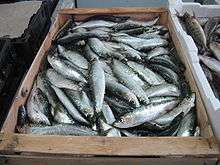
Mediterranean fishing and brackish water lake fishery declined after the dam was finished because nutrients that flowed down the Nile to the Mediterranean were trapped behind the dam. For example, the Sardine catch off the Egyptian coast declined from 18,000 tons in 1962 to a mere 460 tons in 1968, but then gradually recovered to 8,590 tons in 1992. A scientific article in the mid-1990s noted that "the mismatch between low primary productivity and relatively high levels of fish production in the region still presents a puzzle to scientists."[36]
A concern before the construction of the High Dam had been the potential drop in river-bed level downstream of the Dam as the result of erosion caused by the flow of sediment-free water. Estimates by various national and international experts put this drop at between 2 and 10 meters. However, the actual drop has been measured at 0.3–0.7 meters, much less than expected.[23]
The red-brick construction industry, which consisted of hundreds of factories that used Nile sediment deposits along the river, has also been negatively affected. Deprived of sediment, they started using the older alluvium of otherwise arable land taking out of production up to 120 square kilometers annually, with an estimated 1,000 square kilometers destroyed by 1984 when the government prohibited, “with only modest success,” further excavation.[37] According to one source, bricks are now being made from new techniques which use a sand-clay mixture and it has been argued that the mud-based brick industry would have suffered even if the dam had not been built.[31]
Because of the lower turbidity of the water sunlight penetrates deeper in the Nile water. Because of this and the increased presence of nutrients from fertilizers in the water, more algae grow in the Nile. This in turn increases the costs of drinking water treatment. Apparently few experts had expected that water quality in the Nile would actually decrease because of the High Dam.[24]
See also
- Egyptian Public Works
- List of conventional hydroelectric power stations
- List of largest dams
- List of power stations in Egypt
- Water politics in the Nile Basin
References
- ↑ "Aswan High Dam". Carbon Monitoring for Action. Retrieved 2015-01-15.
- ↑ Rashed, Roshdi (2002-08-02), "PORTRAITS OF SCIENCE: A Polymath in the 10th Century", Science, Science magazine, 297 (5582): 773, doi:10.1126/science.1074591, PMID 12161634, retrieved 2008-09-16
- ↑ Corbin, Henry (1993; original French 1964), History of Islamic Philosophy, Translated by Liadain Sherrard, Philip Sherrard, London; Kegan Paul International in association with Islamic Publications for The Institute of Ismaili Studies, p. 149, ISBN 0-7103-0416-1 Check date values in:
|date=(help) - ↑ Egypt bond Archived May 13, 2005, at the Wayback Machine.
- ↑ Roberts, Chalmers (December 1902), "Subduing the Nile", The World's Work: A History of Our Time, V: 2861–2870, retrieved 2009-07-10
- ↑ Collins, Robert O. (2000). "In Search of the Nile Waters, 1900–2000". The Nile: Histories, Cultures, Myths. Edited by Haggai Erlich and Israel Gershoni. Lynne Rienner. pp. 255–256.
- ↑ Dougherty, James E. (March 1959), "The Aswan Decision in Perspective", Political Science Quarterly, The Academy of Political Science, 74 (1): 21–45, doi:10.2307/2145939
- ↑ Smith, p. 242
- 1 2 Dougherty, p. 22
- ↑ Smith, p. 247
- ↑ Smith, Charles D. (2007). Palestine and the Arab–Israeli Conflict (Sixth ed.). Boston/New York: Bedford/St. Martin's. ISBN 0-312-43736-6.
- ↑ Osman the Efficient
- ↑ Collins, Robert O. (2002). The Nile. Yale University Press. p. 181. ISBN 0-300-09764-6.
- ↑ "1970: Aswan Dam Completed". National Geographic Society. Retrieved 20 July 2014.
- ↑ Impacts of the Irrigation Improvement Projects in Egypt. Egyptian-Dutch Advisory Panel and International Institute for Land Reclamation and Improvement, Wageningen, The Netherlands, 1999. Download from: , under nr. 4, or directly as PDF:
- ↑ Egyptian Water Use Management Project (EWUP), 1984. Improving Egypt’s Irrigation System in the Old Lands, Final Report. Colorado State University and Ministry of Public Works and Water Resources
- ↑ Egyptian Drainage Research Institute, DRI, yearbook 1995/1996
- ↑ M.S.Abdel-Dayem, 1987. "Development of land drainage in Egypt." In: J.Vos (Ed.) Proceedings, Symposium 25th International Course on Land Drainage. ILRI publ. 42. International Institute for Land Reclamation and Improvement, Wageningen, The Netherlands
- ↑ Ministry of Water Resources and Irrigation, Egyptian Public Authority for Drainage Projects, Drainage Research Institute, 2006: The National Drainage and Drainage Water Reuse Programs, Egypt, Local Actions at the 4th World Water Forum, 2 March 2007, accessed 28 April 2010
- ↑ Abul-Ata, Abdel Azim, "Egypt and the Nile after the Construction of the High Aswan Dam", Ministry of Irrigation and Land Reclamation, Cairo, 1978, quoted by Asit Biswas and Cecilia Tortajada, 2004
- ↑ Biswas, Asit K. (November–December 2002). "Aswan Dam Revisited: The Benefits of a Much-Maligned Dam". Development and Cooperation (6): 25–27.
- ↑ Professor Fouad Ibrahim, an Egyptian geoscientist teaching in Germany in a 1982 article quoted by Peter Wald:"25 Years Later:The Aswan High Dam Has Proven its Worth", Development and Cooperation 2/96, p.20–21
- 1 2 3 4 5 6 M.A. Abu-Zeid & F. Z. El-Shibini: "Egypt's High Aswan Dam", Water Resources Development, Vol. 13, No. 2, pp. 209–217, 1997
- 1 2 3 Schamp, Heinz (1983). "Sadd el-Ali, der Hochdamm von Assuan (Sadd el-Ali, the High Dam of Aswan)". Geowissenschaften in unserer Zeit (in German). 1 (2): 51–85.
- ↑ M.A. Mosalam Shaltout, T. El Housry:Estimating the evaporation over Nasser Lake in the Upper Egypt from Meteosat observations, Advances in Space Research, 19 (3) (1997), pp. 515–518
- ↑ Scudder, Thayer; Gay, John (2005), "A comparative survey of dam-induced resettlement in 50 cases" (PDF), in Scudder, Thayer, The Future of Large Dams: Dealing with Social, Environmental, Institutional and Political Costs, ISBN 1-84407-155-3
- ↑ Scudder, Thayer (2003), The Aswan High Dam Case (PDF), pp. 11–12
- ↑ Stock, Jill Kamil ; photographs by Michael (1993). Aswan and Abu Simbel: history and guide. Cairo: American University in Cairo Press. pp. 141–142. ISBN 977-424-321-8.
- ↑ The Rescue of Nubian Monuments and Sites, UNESCO project site about Nubia Campaign.
- 1 2 Abu Zeid, M.A. (September 1989). "Environmental impacts of the High Dam". Water Resources Development. 5 (3): 156.
- 1 2 Biswas, Asit K.; Tortajada, Cecilia (March 2004), Hydropolitics and Impacts of the High Aswan Dam, Mexico: Third World Centre for Water Management
- ↑ Schwartz, Maurice L., ed. (2005). Encyclopedia of coastal science. Dordrecht: Springer. p. 358. ISBN 1-4020-1903-3.
- ↑ Ministry of Water Resources and Irrigation, Egyptian Public Authority for Drainage Projects, Drainage Research Institute, 2006: The National Drainage and Drainage Water Reuse Programs, Egypt, Local Actions at the 4th World Water Forum, March 2, 2007. Retrieved April 28, 2010.
- ↑ Miller. F. DeWolfe et al. Schistosomiasis in Rural Egypt. 1978. United States Environment Protection Agency. EPA - 600/1-78-070.
- ↑ Baraket, R. Epidemiology of Schistosomiasis in Egypt: Travel through Time: Review. Journal of Advanced Research (2013) 4, 425–432
- ↑ El-Sayed, Sayed; van Dijken, Gert L. (1995), The southeastern Mediterranean ecosystem revisited: Thirty years after the construction of the Aswan High Dam
- ↑ Scudder, Thayer (2003), The Aswan High Dam Case (PDF), p. 11
External links
| Wikisource has original text related to this article: |
| Wikimedia Commons has media related to Aswan High Dam. |
- View the official opening of the Aswan Dam in 1971
- Aswan Dam Sixth biggest dam